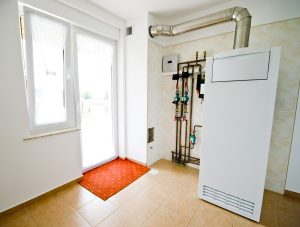If Not, Is Your AC Ready For the Warmer Weather?
Punxsutawney Phil will soon be coming out to predict the early spring season, and you need to be ready for the warmer weather that’s coming! Your air conditioner or other cooling system need to be prepared to battle the extreme heat and high humidity levels that arrive with seasonal changes in the spring. HVAC maintenance for spring weather goes hand-in-hand with Groundhogs Day temperature predictions.
Why Schedule HVAC Maintenance for Spring Weather?
When Phil does his famous Groundhogs Day temperature and season prediction, many things come to mind about the early spring. The most thought of is spring cleaning, which tackles every nook and cranny of your home. Just like spring cleaning, your cooling system needs to undergo maintenance in early spring for several reasons:
- Avoid the Rush
It’s better to schedule your maintenance for spring sooner rather than later, especially before the hot temperatures hit. You don’t want to make a frantic, emergency phone call during extreme highs and intense humidity. Plus, most people wait to schedule their HVAC maintenance for spring right before summer arrives or when their system goes out because of the extreme temperature change. Then you will have to deal with waiting for an appointment.
- Replace Worn-Out Parts
Regardless of how durable modern HVAC systems are, you will still experience components that are worn out and need to be replaced. You could have damaged parts in your cooling system that you aren’t even aware of since you last used it. Our technicians at Douglas Cooling & Heating will inspect your cooling system, identify any damaged components, and repair or replace them before the heat hits. This will save you money, in the long run, considering you won’t have to make a last-minute call for an HVAC repair when your air conditioner stops working altogether.
- Extend the Lifespan of Your HVAC System
Preventative maintenance in early spring allows your system to perform efficiently and struggle-free during spring and summer. With maintenance, your unit is properly lubricated and cleaned, which is important after low winter temperatures. Future breakdowns and costly replacements are also limited with spring maintenance. Douglas Cooling & Heating offers preventative maintenance plans, so our NATE-certified technicians will extend the life of your cooling system and boost your cooling efficiency during heat waves!
- Improve Indoor Air Quality
Your furnace produces dry air inside your home during the winter weather. If you had your home winterized, you might even suffer from extreme stale indoor air trapped indoors. Aside from opening windows and letting fresh air in, HVAC maintenance for spring weather eliminates clogged filters and dust buildup inside your unit, and removes any obstructions in your ductwork. If you have anything blocking or restricting your airflow in your unit, your indoor air quality is compromised, leading to poor indoor quality and health issues.
- Increase Energy Savings
HVAC maintenance on your air conditioner or heat pump not only extends the life of your unit but it can save you money on your energy bill. Properly maintained equipment will meet the demands of your thermostat despite the outside temperature. Systems that have dirty air filters, restricted airflow, or damaged parts have to work harder to provide cooler temperatures in your home, consuming more energy.
Early spring savings and improved efficiency are guaranteed when preparing for Groundhogs Day temperatures! Contact Douglas Cooling & Heating today and schedule your HVAC maintenance for spring weather with our NATE-certified technicians.


 Winter is prime time for furnace issues, which makes sense considering the added strain people put on their systems during this time of year. As you rely on your furnace to keep your home warm, it is recommended that you be especially aware of any signs that might indicate a problem with it. One of the most obvious signs that your furnace is experiencing issues is the presence of strange noises during operation. Have a look at some of these weird furnace noises, what they mean, and what you can do about it.
Winter is prime time for furnace issues, which makes sense considering the added strain people put on their systems during this time of year. As you rely on your furnace to keep your home warm, it is recommended that you be especially aware of any signs that might indicate a problem with it. One of the most obvious signs that your furnace is experiencing issues is the presence of strange noises during operation. Have a look at some of these weird furnace noises, what they mean, and what you can do about it.  There are a lot of different heating systems to choose from, if you’re in the market for a new one this winter. Not all will be suited to your specific needs. Some won’t even be able to be installed in your home. Still, there will be plenty that will have something to offer to your home in some way. It’s important that you consider each of the options available to you, so that you can find the system that best fits your needs. Let’s go over some of the most popular heating system types available, and the benefits of each.
There are a lot of different heating systems to choose from, if you’re in the market for a new one this winter. Not all will be suited to your specific needs. Some won’t even be able to be installed in your home. Still, there will be plenty that will have something to offer to your home in some way. It’s important that you consider each of the options available to you, so that you can find the system that best fits your needs. Let’s go over some of the most popular heating system types available, and the benefits of each. 
